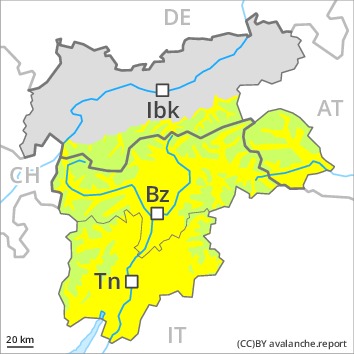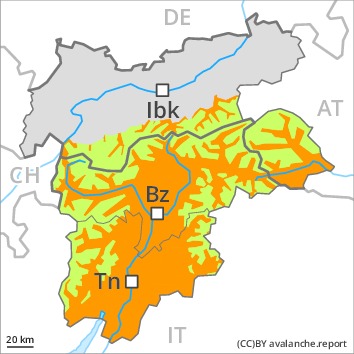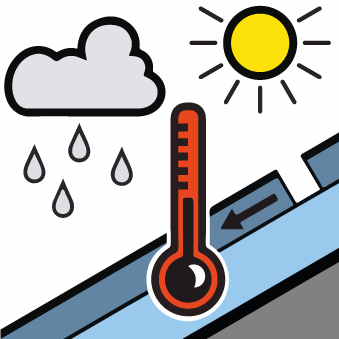AM

Danger level
 | 2600m
|
Avalanche Problem
PM

Danger level
 | 2600m
|
Avalanche Problem
Gradual increase in avalanche danger as a consequence of warming during the day and solar radiation.
Gliding avalanches are the main danger. These can reach dangerously large size. Individual gliding avalanches can also be released in the night or in the morning. Caution is to be exercised in particular on steep grassy slopes on sunny slopes. Areas with glide cracks are to be avoided.
Wet avalanches can in some places be released by a single winter sport participant. This applies in particular in the afternoon, especially in areas where the snow cover is rather shallow. Caution is to be exercised in particular on steep sunny slopes below approximately 2600 m. Backcountry tours should be concluded timely.
Dry avalanches can additionally be released in deeper layers, especially on extremely steep shady slopes above approximately 2300 m at transitions from a shallow to a deep snowpack. Such avalanche prone locations are very rare.
Snowpack
dp.2: gliding snow
dp.10: springtime scenario
Outgoing longwave radiation during the night will be good. The surface of the snowpack has frozen to form a strong crust and will soften during the day.
In its middle, the snowpack is wet. Large-grained weak layers exist in the centre of the snowpack, in particular on steep sunny slopes below approximately 2600 m.
In very isolated cases weak layers exist in the bottom section of the snowpack on shady slopes, in particular above approximately 2300 m.
Tendency
A clear night will be followed in the early morning by quite favourable conditions. The danger of gliding avalanches will persist.











